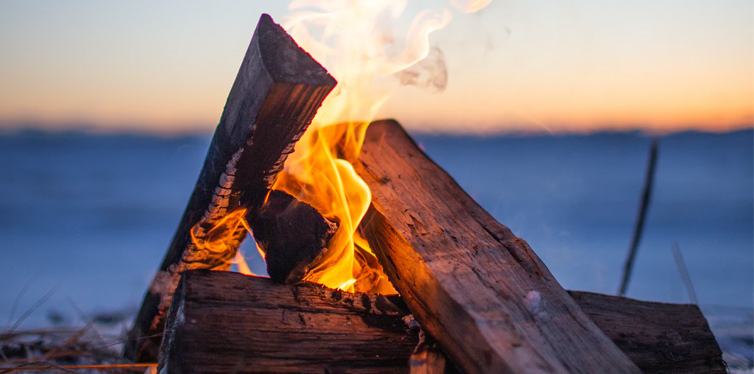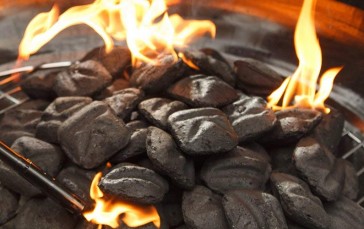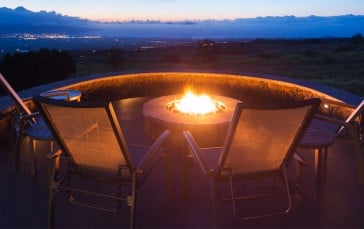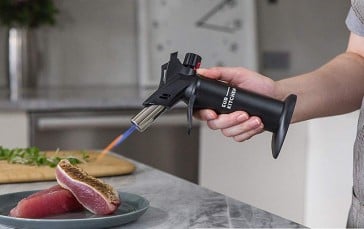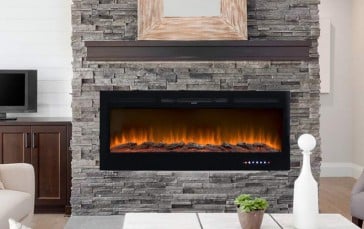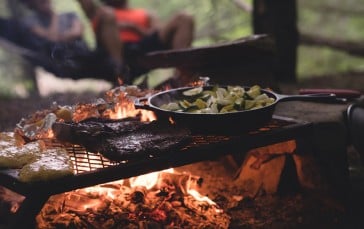Tips To Make A Smokeless Fire
So as it happens the phrase no smoke without fire is complete nonsense and experienced woodsmen, campers, and hikers will tell you that, in fact, a smokeless fire is possible as long as you know what you’re doing. If you’re planning on dropping everything, selling all your worldly possessions, and heading off into the woods for some peace and quiet, knowing how to build a smokeless fire is a useful skill to have. And even if you’re not abandoning society and going to live off the grid forever, you may as well learn how to do it, anyway.
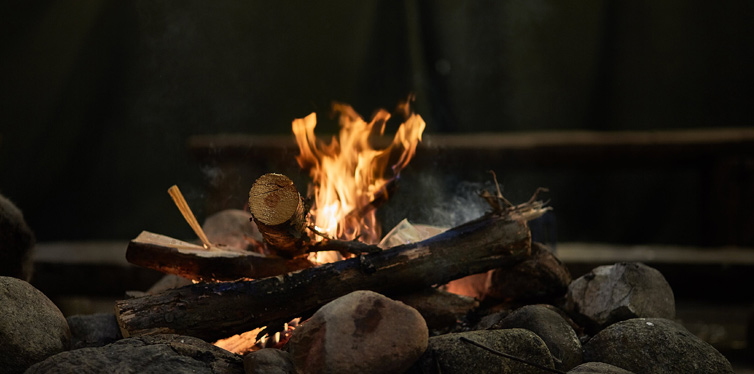
Benefits Of A Smokeless Fire
First though, let’s get to grips with why you would want or need a smokeless fire, because it’s more than just stopping that satisfying but ultimately kind of irritating smokey scent clinging to your clothes.
- No Smoke = No Pollution: The absence of smoke means the fire is more environmentally friendly. It won’t pollute the air and also means you won’t breathe in harmful toxins and chemicals which are a byproduct of a smokey fire. This ensures healthy lungs and a more functional respiratory system, which will be useful if you’re embarking on a mammoth hike.
- Secret: Without a pillar of smoke emerging from your campsite (or backyard, if you’re just practicing), you’re granted a level of secrecy that ensures you don’t get discovered by someone or something you don’t want discovering you. This will give you peace of mind and keeps curious critters and others ignorant of your location.
- Cooking Efficiency: Unlike smokey fires, a smokeless fire means you can cook anything you like. If you want to bake some bread to fill you up for the morning, you can. If you want to heat up coffee or tea in your camping kettle, you can. As there’s no fat or oil used in a smokeless fire, it’s also healthier.
- Multi-Purpose: A smokeless fire is about more than just cooking food, though and you can also use it to heat a room (or shelter) without succumbing to carbon monoxide poisoning in your sleep.
- Longer Lifespan, Quicker Cooking: A smokeless fire does not die out as quickly as fires that use kerosene or similar fuels. This means you can cook more food at one time, which is ideal for when you need to prepare perishables for the next leg of your trip while also having better success cooking large cuts of meat all the way through for safe eating.
- More Fuel Efficient: Finally, the long-lasting flame means you don’t need to use as much fuel with each fire, which is perfect for long camping adventures and helps you conserve fuel to ensure it lasts the duration of your trip. It is more economical than kerosene or gasoline options, requiring less restocking.
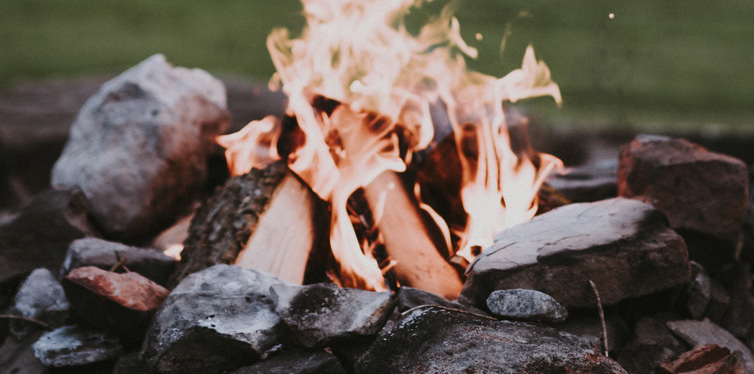
Best Type Of Fuel For A Smokeless Fire
While smokey fires use a variety of fuels including gasoline or kerosene, a smokeless fire needs specific fuels to ensure you get all the benefits you need from it.
- Coke – Comprising 90% carbon, coke (no, not that coke) is a byproduct of coal and is made through destructive distillation.
- Anthracite – At 91% carbon, this blue flame producing fuel is another reliable smokeless option for your campfire.
- Other Options – On the chance you run out of these fuels, you can use the environment to create a smokeless fire. Look for twigs, animal droppings, sticks, and grass. These should be completely dry to ensure no smoke.
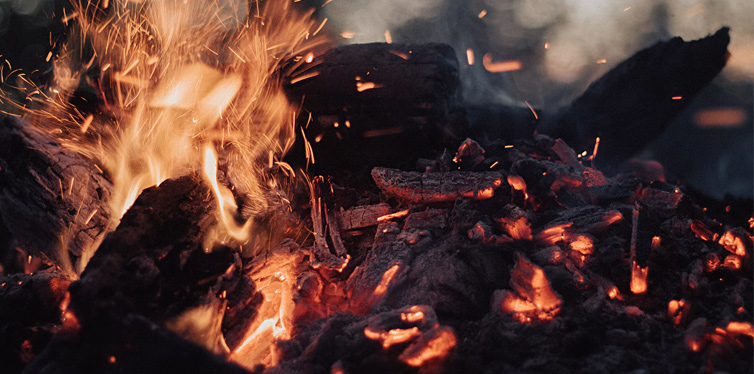
The All Important How To:
- Get The Right Materials: Start with the base which will need dry materials such as newspaper or printing paper. Once you’ve collected this, organize your firestarters and fuel, bricks or stones, and a bucket of water, just in case you need to extinguish it early.
- Clear The Area: Remove any twigs or leaves around the fire areas which could catch alight to ensure proper safety and prevent the chance for wildfires to start.
- Set Up the Fireplace: Use the bricks or stones to create a fireplace, but also leave enough space in the middle to place the fuel ready for lighting.
- Lay A Sheet of Paper: It doesn’t matter if you’re using printer paper or newspaper (although they must both be dry), and place a single sheet in the middle of the fireplace. This sheet will act as a base for you to build your fire on and helps you first ignite your smokeless fire.
- Arrange Wood In A Triangle: On the paper, arrange 3 pieces of wood in a triangle shape and then on top of this, add further pieces of tinder in a stable structure where there is no chance of it falling apart as you light your fire.
- Place Firelighters In The Nest: Inside this nest of kindle and sticks, arrange the firelights in a place that are easy to reach for straightforward ignition. Depending on the size of the fire you want to light, we’d advise using at least 3 to get a decent beginner flame going.
- Light ‘Em Up: Light the firelights and add enough charcoal or your chosen fuel (coke, anthracite, twigs, droppings, etc.) to get an adequate fire started and burning for however long you need it for.
- Refuel When Needed: While smokeless fires do not need as much maintenance as regular fires, it’s still important to monitor the fuel level to keep it burning to ensure you can cook food and stay warm overnight.
- Crack Open A Beer And Enjoy It: Because that’s what camping trips are all about, isn’t it? Take a load off your feet, relax, and enjoy the secluded silence of the surrounding trees. Just don’t overdo it on the beers, you’ve got to get up early tomorrow.
S-s-s-s-smoklesssss
So whether you want some privacy, are concerned about saving the environment, or want to cook as much meat as you can to keep you fueled through a big camping expedition, knowing how to build and maintain a smokeless fire is a fantastic skill to have. And even if you’re not a big camper, it will at least help you avoid complaints from neighbors when you have all your buddies round for the big Super Bowl BBQ.


